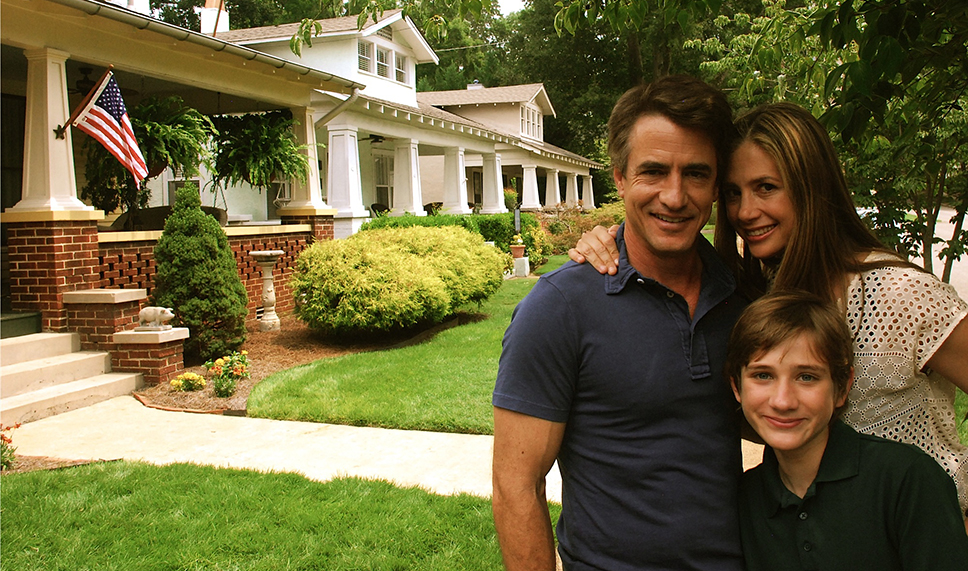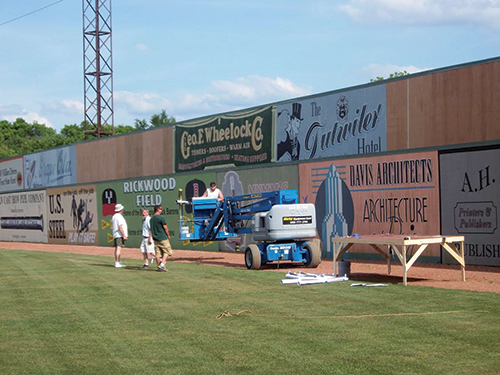By Emmett Burnett
Judy Perszyk was enjoying the front porch, absorbing a lovely Huntsville day in the summer of 2012, unaware her home was destined for stardom.
“A man walked up, saying he was scouting film project locations,” recalls Judy, a resident of Madison County’s Five Points Historic District. A year later, 100 people are in the house and yard shooting the Hollywood production “Space Warriors,” which was released in 2013 and stars Danny Glover.
Judy’s house was added to an exclusive list: About 146 film locations shot in the Heart of Dixie.

“Often it begins with a knock on the door,” says movie production coordinator Jerilyn Bickford, based in Birmingham. “A movie scout may like a home’s exterior and ask the homeowner’s permission to look inside.” Regardless of the search methods, Tinsel Town loves us.
“Alabama is great,” adds movie actor–producer Kevin Downes, from his Burbank, Calif., office. His film credits include “Mom’s Night Out” and “Woodlawn,” both filmed in Birmingham. “Your state welcomed us with open arms. I would definitely come back.”
Most Alabamians who opened their homes to Hollywood would welcome them back too. But all agree that though movies may be a labor of love, the operative word is “labor.”
“Actors are nice and polite,” Judy says, “but they are here to work. We didn’t bother them, just let them be, studying their lines, rehearsing. You learn fast. They’re here for a job.”
Mobile’s Janine Stebbins agrees about long days of movie making. Her home, Blacksher Hall, was used in “U.S.S. Indianapolis: Men of Courage,” which was set for release in late May and stars Nicolas Cage. Cage did not film scenes at Blacksher, but Janine recalls, “His driver told us, the actor is quiet (while) riding to the Mobile set. He studies the script. But on the trip back, he is all chatty.” She also notes that producers don’t just film in your home. They seize it.
“They take over,” she laughs. Crews removed most of the furniture from her ground floor, replacing it with objects indicative of World War II, including portraits of President Harry Truman.

Blacksher’s library became an Army general’s office. The scene called for a tobacco-hazy room. “Technicians set up a fog machine,” says Janine, “but smoke was supplemented by off-camera workers, smoking and puffing cigar smoke into the scene.”
Unlike Blacksher Hall’s movie, Huntsville’s “Space Warriors” used mostly existing furnishings. “It is fun watching a film showing characters using my telephone,” Judy laughs. “Family pictures on the walls, chairs, even cups, plates in kitchen table scenes are my cups and plates, on my kitchen table.”
Transforming homes and city blocks
Transforming home sweet home into household Hollywood is daunting, but turning entire buildings, city blocks, and stadiums into make-believe is epic. In 1970s Mobile, a Brookley Field airplane hangar held the largest sound stage ever created for a movie, for 1977’s “Close Encounters of the Third Kind,” written and directed by Steven Spielberg. The mothership’s return to earth scene was filmed in it.
In Montgomery, technicians poured rocks over Cobb Street and parked dozens of 1954 automobiles for a gravel road scene in 1989’s “The Long Walk Home,” which starred Sissy Spacek and Whoopi Goldberg.
And in the late 1970s, Twentieth Century Fox rented the Opelika Manufacturing Corporation and used the Golden Cherry Motel for “Norma Rae,” starring Sally Field, Beau Bridges and Auburn University students who were hired as extras.
“Many cast members actually stayed at the hotel the movie was filmed in,” says Pam Powers-Smith, director of the community organization, Opelika Main Street. “They didn’t get out a lot, and had food delivered to the motel.”
The Golden Cherry Motel – which will never be confused with the Waldorf Astoria – still operates. Room 130, used in the film, is no different than any of the other motel’s rooms, except it helped Sally Field win an Oscar.
“She was a lovely lady,” says Warner Williams, who was active with the Opelika Chamber of Commerce during the filming of “Norma Rae.” “Days before filming, she wore old ragged clothes and hung around the mill, psyching up for her character.”
Speaking of characters, Birmingham may hold an Alabama movie record for a cast of thousands – however, not all were human, or real.
 The Magic City’s Rickwood Field was chosen for “42,” the baseball story of Jackie Robinson. “The 2012 movie depicts a stadium of 6,000 fans,” says Friends of Rickwood Field executive director David Brewer. “But the people in upper levels are inflatables.”
The Magic City’s Rickwood Field was chosen for “42,” the baseball story of Jackie Robinson. “The 2012 movie depicts a stadium of 6,000 fans,” says Friends of Rickwood Field executive director David Brewer. “But the people in upper levels are inflatables.”
About 2,000 recruited Birmingham extras, dressed in period clothing, were in the lower, close-up bleachers. But for the upper levels, balloons shaped like people were blown up, with facial hair, toupees, baseball caps and clothes added. From a distance, you can’t tell the fans in the high-rise stands are balloons.
The Birmingham baseball center portrayed three stadiums of Robinson’s career: In addition to Rickwood, it was dressed as Ebbets Field in Brooklyn and Roosevelt Stadium in Droyer’s Point, N.J. “The sets were layered with fake walls,” recalls Brewer. “Each wall was filmed for one of the three stadium scenes it represented. When the shot was completed, the wall was removed, revealing the next ‘stadium wall’, and then the last one. Workers added billboards, scoreboards, colors, props and paint jobs to Rickwood, indicative of the stadium it represented.”
One of the state’s first major movies, 1949’s war drama “Twelve O’Clock High” starring Gregory Peck, was filmed in Ft. Rucker. From then on, Hollywood has sought Alabama locations for film settings. Many sites are famous in their own right, like the Edmund Pettus Bridge, prominent in the 2014 Oscar-nominated movie, “Selma.”
Others exist only in film, like Baldwin County’s stab-and-slash horror house in “Friday the 13th Part VII: The New Blood.” It burned to the ground in the movie’s final scene. That’s show biz.





